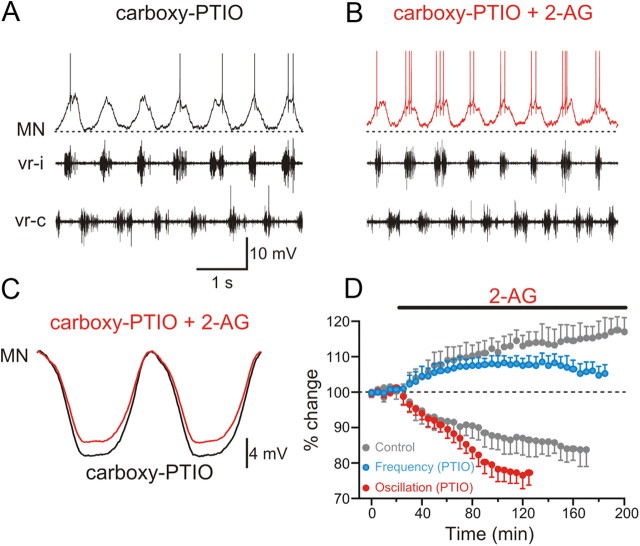Figure 7.
Nitric oxide contributes to the increase in the locomotor burst frequency by the endocannabinoid 2-AG. A, Locomotor rhythm was induced by NMDA in the presence of the NO scavenger carboxy-PTIO and was recorded in opposing ventral roots. Intracellular recording from a MN that received on-cycle excitation in phase with the ipsilateral ventral root (vr-i) activity that alternated with midcycle inhibition occurring in phase with the contralateral ventral root (vr-c) burst. B, Application of the endocannabinoid 2-AG (2 μm) in the presence of carboxy-PTIO was still able to increase the burst frequency that was associated with a decrease in the oscillation amplitude. C, Averaged synaptic inputs received by the MN showing a decrease in the amplitude of the oscillation by 2-AG. In these recordings, the action potentials were filtered out using a low-pass filter, normalized, and aligned in relation to the membrane potential of the MN. D, Averaged data from all the experiments showing the time course of the effect of 2-AG on synaptic transmission and the locomotor burst frequency in the presence of carboxy-PTIO. The decrease of the oscillation amplitude was more pronounced (red), while the potentiation of the locomotor burst frequency was attenuated (blue) in preparations preincubated with carboxy-PTIO compared with controls (gray; same data as in Fig. 1D).

